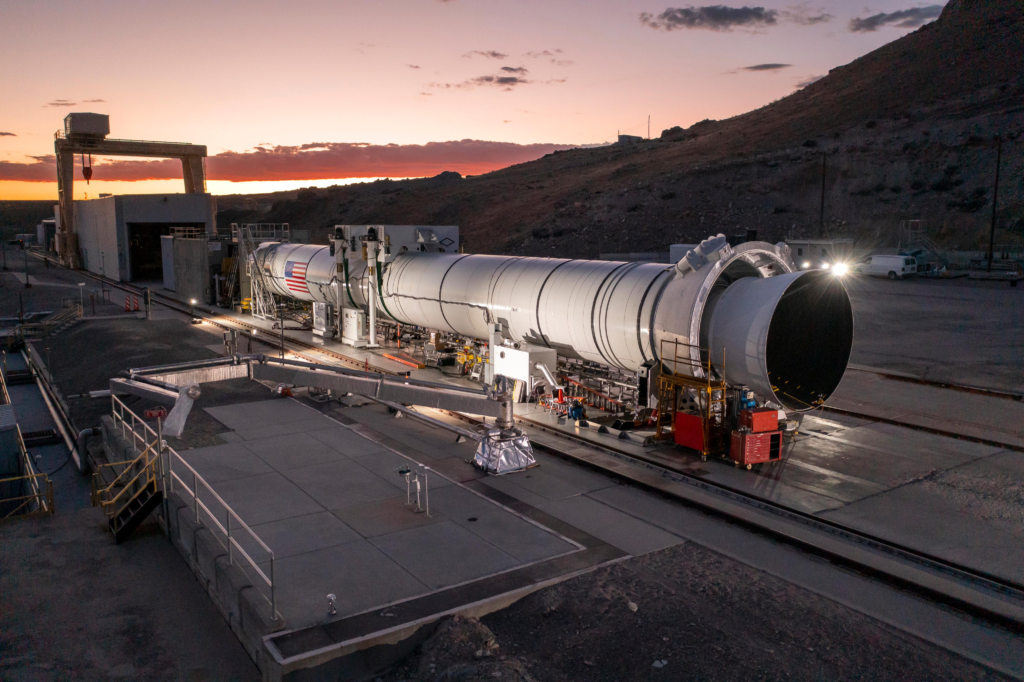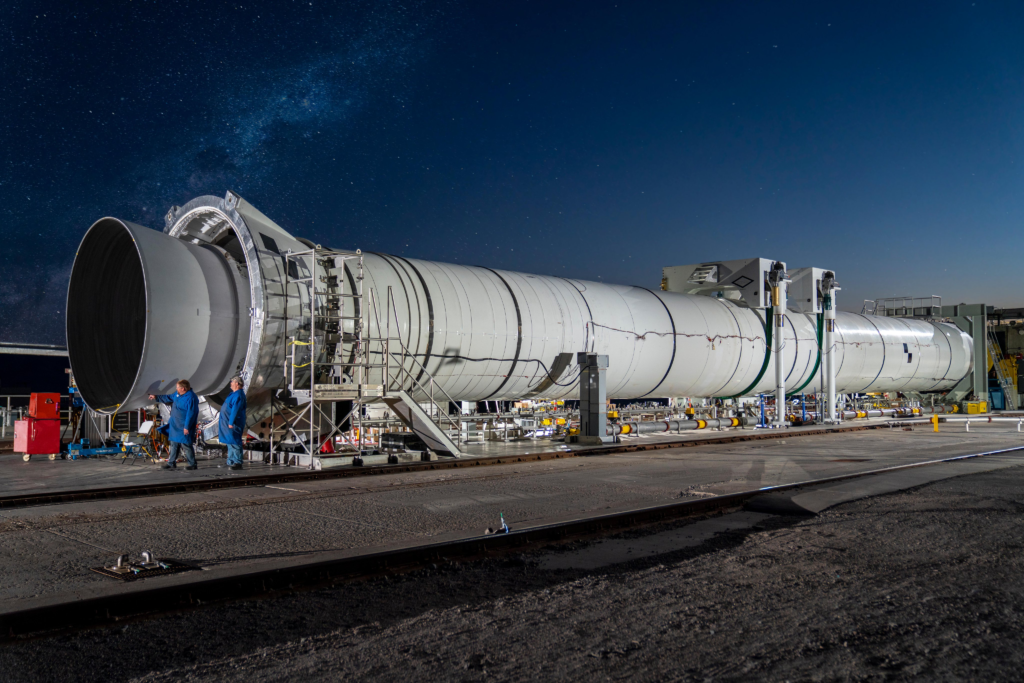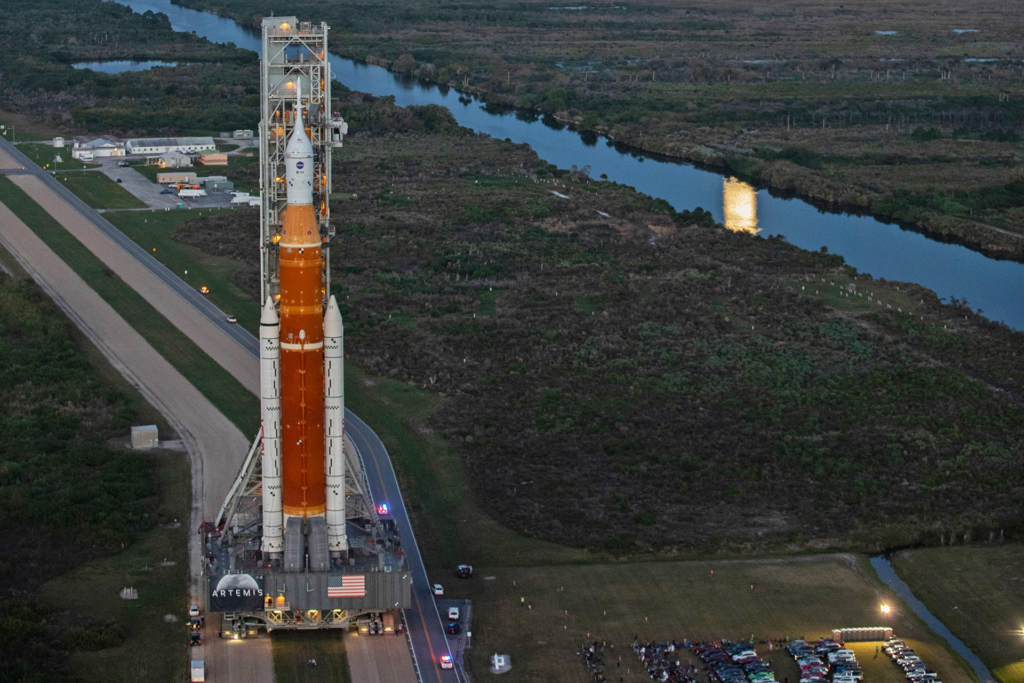
NASA Is Getting Very Close To SLS’s First Ever Launch
The Space Launch System is one of the most powerful rockets ever built. For years now NASA has been working to develop, test, and now complete final preparations for the first launch of this next generation rocket. The success of this test will have a major effect on the future of Moon exploration and returning humans to the surface apart of Artemis.
Over the past few weeks, NASA has been busy working on the launch vehicle inside the Vehicle Assembly Building. This work has included fixing various problems revealed during the wet dress rehearsal, preparing for launch, and completing some final tests. All of which working towards NASA’s launch estimate of late August for Artemis 1.
The work has also been focused on Orion as this capsule plays just an important role in future missions to the Moon. With the recent success of additional missions like CAPSTONE, the ambitious goals of Artemis are beginning to take shape. Here I will go more in-depth into the recent updates on SLS, progress within the VAB, and what to expect in the coming weeks and months.
Recent Updates

Only a few days ago on the 15th NASA tweeted saying, “Inside the Vehicle Assembly Building at @NASAKennedy in Florida, technicians are making progress to prepare the SLS rocket and @NASA_Orion spacecraft for #Artemis I.” More specifically, over the past few weeks, technicians have continued to prepare the Space Launch System rocket and Orion spacecraft for Artemis I. During work to repair the source of a hydrogen leak, engineers identified a loose fitting on the inside wall of the rocket’s engine section, where the quick disconnect for the liquid hydrogen umbilical attaches. The component, called a “collet,” is a fist-sized ring that guides the quick disconnect during assembly operations. Teams will repair the collet by entering the engine section in parallel with other planned work for launch preparations. Technicians have replaced the seals on the quick disconnect of the tail service mast umbilical and will reattach the umbilical plate once the loose collet is addressed.
The agency pointed out they are still targeting a late August launch period and will identify a specific target launch date after engineers have examined the collet. Technicians continue work associated with battery activations, and plan to turn on the core stage batteries this weekend, before they are installed on the rocket. In the week prior, teams performed additional planned work on aspects of the rocket and spacecraft. Engineers swapped out a computer on the Interim Cryogenic Propulsion Stage called the Inertial Navigation and Control Assembly unit that was used during wet dress rehearsal activities with the one that will be used for flight and will test the unit next week. The newly installed flight unit includes freshly calibrated inertial navigation sensors and updated software to guide and navigate the upper stage during flight. Technicians also activated several batteries for the rocket elements, including for the solid rocket boosters and the ICPS. The batteries on the core stage will be activated in the coming weeks, and all the batteries will then be installed. The batteries provide power for the rocket elements during the final portion of the countdown on launch day and through ascent.
Next up, teams will start the flight termination systems operations, which include removing the core stage and booster safe and arm devices for calibration and removing and replacing the command receiver decoders with the flight units. The safe and arm devices are a manual mechanism that put the flight termination system in either a “safe” or “arm” configuration while the command receiver decoders receive and decode the command on the rocket if the system is activated. Meanwhile, on the Orion spacecraft, teams installed a technology demonstration that will test digital assistance and video collaboration in deep space. This technology, named Callisto, is meant to show how commercial technology could assist future astronauts on deep space missions. The payload will demonstrate how astronauts and flight controllers can use human-machine interface technology to make their jobs simpler, safer and more efficient, and advance human exploration in deep space. Engineers are also conducting powered testing on the crew module and European service module heaters and sensors.
On July 16th NASA provided more updates in another tweet that mentioned, “We are four days away from the Flight Support Booster-2 test! Let’s catch up on our booster knowledge.” Next, only hours ago they tweeted again highlighting, “Data from this test will improve our booster design for future #Artemis missions that take us farther into deep space than ever before,” said Bruce Tiller, SLS Booster Program manager.” NASA and Northrop Grumman will perform a full-scale static test of a Space Launch System (SLS) solid rocket booster motor at Northrop Grumman’s Promontory, Utah, test facility on July 21st. Engineers will fire the booster during the demonstration, called the Flight Support Booster 2 test, to evaluate materials and processes to improve boosters for future Artemis missions. “The current SLS boosters for the first eight Artemis missions are using a robust mix of new avionics and substantial heritage hardware from the Space Shuttle Program,” said Bruce Tiller, SLS Booster Program manager. “This particular ground test will demonstrate some new materials, a completely new steering system, and a new way to ignite the motor. Data from this test will improve our booster design for future missions that take us farther into deep space than ever before.”
For the test, one booster is affixed in a horizontal test stand and fired for approximately two minutes, the same amount of time and at the same power level as it would be fired during launch. On launch day, a pair of solid rocket boosters in a vertical position attached to the core stage of the SLS rocket supply more than 75% of the total thrust for the first two minutes of flight. Northrop Grumman is the lead contractor for the SLS solid rocket boosters. The solid rocket booster is based on three decades of knowledge and experience gained with the space shuttle booster, and improved with the latest technology. Standing 17 stories tall and burning approximately six tons of propellant every second, each booster generates more thrust than 14 four-engine jumbo commercial airliners. These upcoming tests will play a big role in the future of SLS and reaching the Moon.
Artemis 1

Based on the recent updates from NASA and some of the dates the agency has shared, Artemis 1 and the first flight of SLS is not far away. Currently, as partially mentioned prior, NASA is still estimating a launch only a month from now in August. Realistically this will be pushed back around September. It depends on the current work inside the VAB. If technicians and engineers discover more problems or general setbacks, we will continue to wait. If not, we can expect to watch the Space Launch System lift off for the first time. Artemis I, formerly Exploration Mission-1, will be the first integrated test of NASA’s deep space exploration systems: the Orion spacecraft, Space Launch System (SLS) rocket and the ground systems at Kennedy Space Center in Cape Canaveral, Florida. The first in a series of increasingly complex missions, Artemis I will be an uncrewed flight test that will provide a foundation for human deep space exploration, and demonstrate our commitment and capability to extend human existence to the Moon and beyond.
During this flight, the spacecraft will launch on one of the most powerful rockets in the world and fly farther than any spacecraft built for humans has ever flown. It will travel 280,000 miles from Earth, thousands of miles beyond the Moon over the course of about a four to six-week mission. Orion will stay in space longer than any ship for astronauts has done without docking to a space station and return home faster and hotter than ever before. “This is a mission that truly will do what hasn’t been done and learn what isn’t known,” said Mike Sarafin, Artemis I mission manager at NASA Headquarters in Washington. “It will blaze a trail that people will follow on the next Orion flight, pushing the edges of the envelope to prepare for that mission.” With this first exploration mission, NASA is trying to lead the next steps of human exploration into deep space where astronauts will build and begin testing the systems near the Moon needed for lunar surface missions and exploration to other destinations farther from Earth, including Mars. The second flight will take crew on a different trajectory and test Orion’s critical systems with humans aboard. All of which will prepare the agency for missions to the surface of the Moon.
Conclusion
The last few months have been very eventful for the Space Launch System and NASA. The wet dress rehearsal ended up taking longer than expected and revealed a few issues with the rocket. However, this is the point of the rehearsal and now NASA is working to fix and prepare SLS for the first test flight. We will have to wait and see how it progresses and the impact it has on the space industry.
